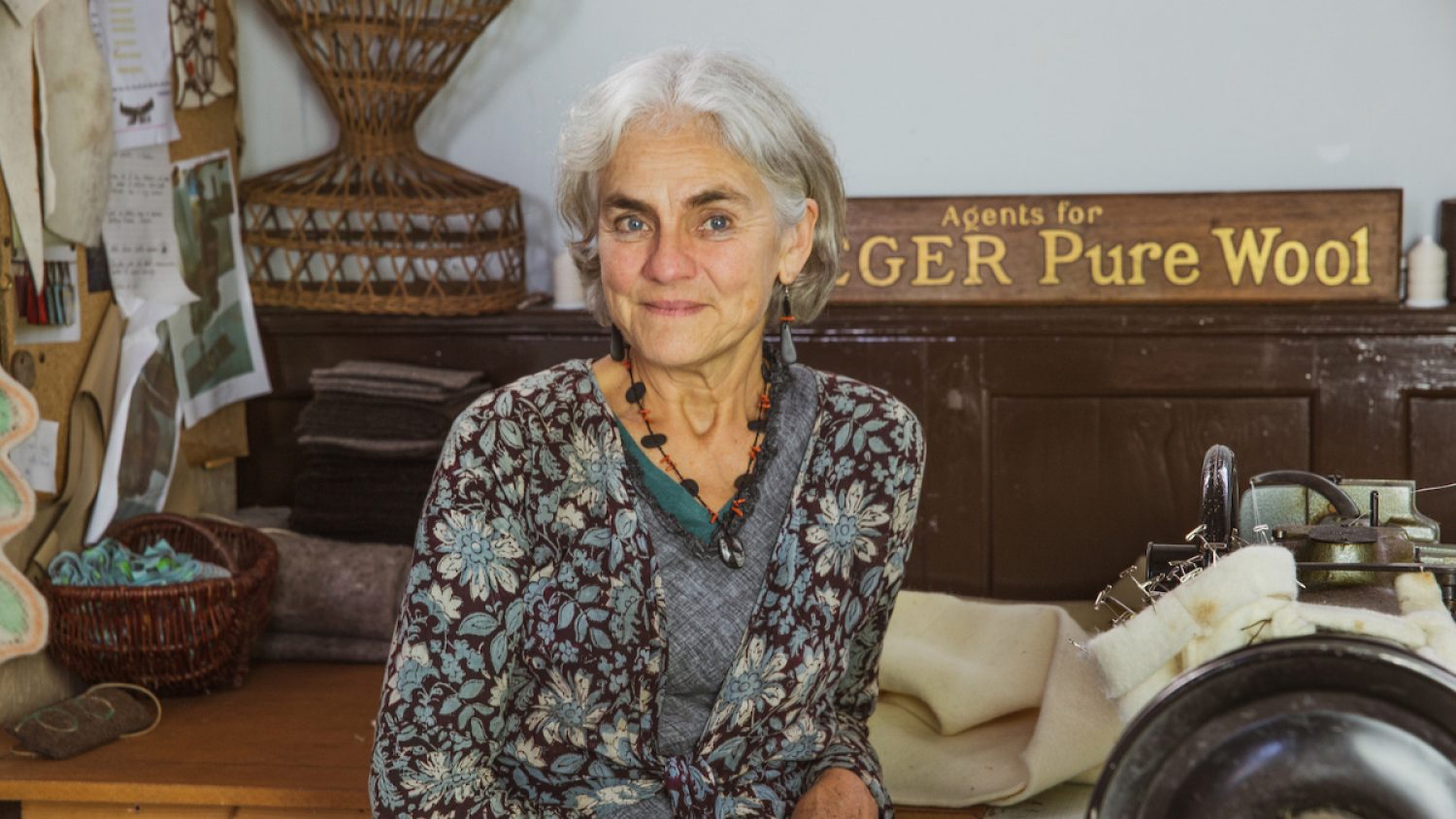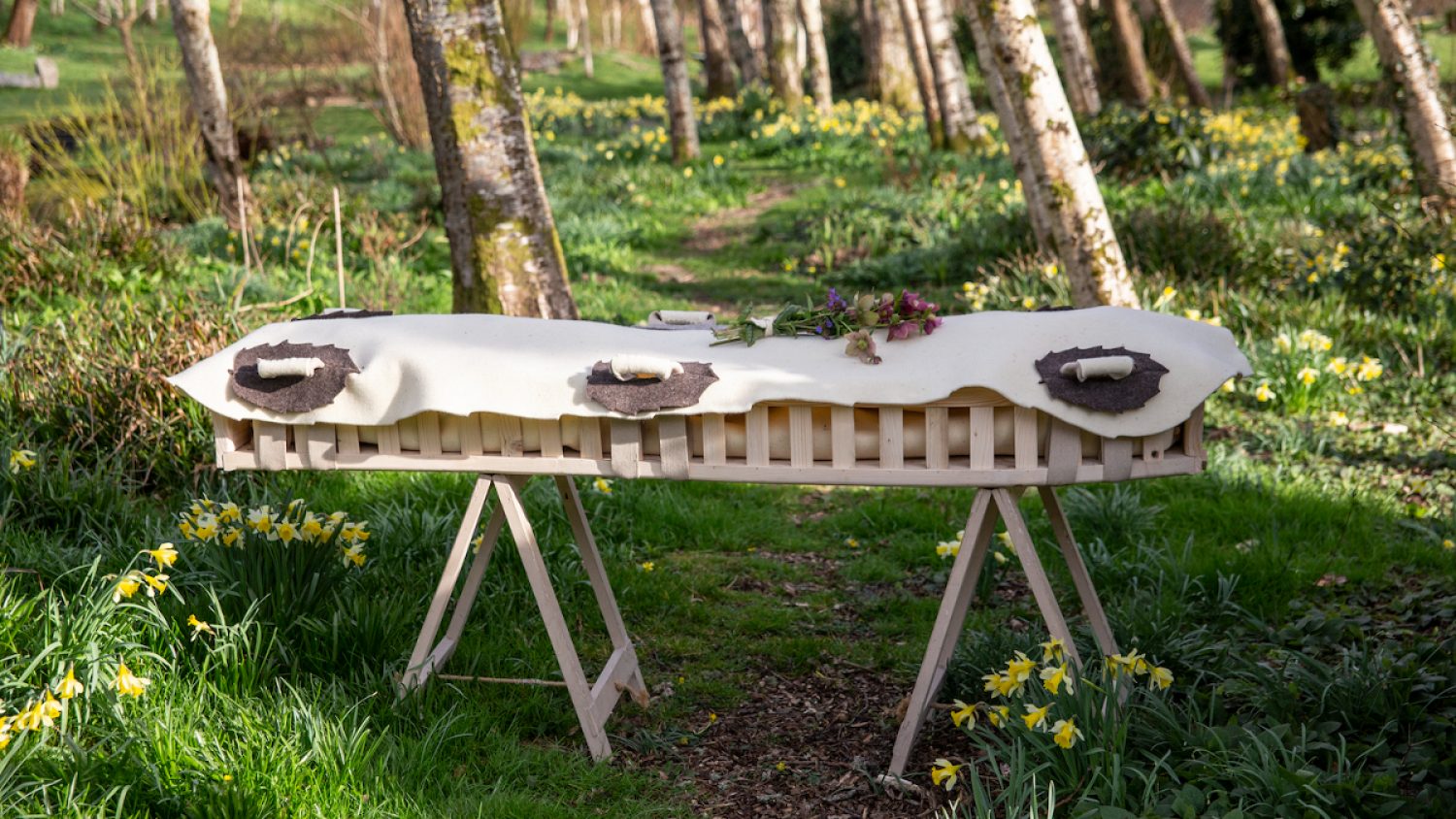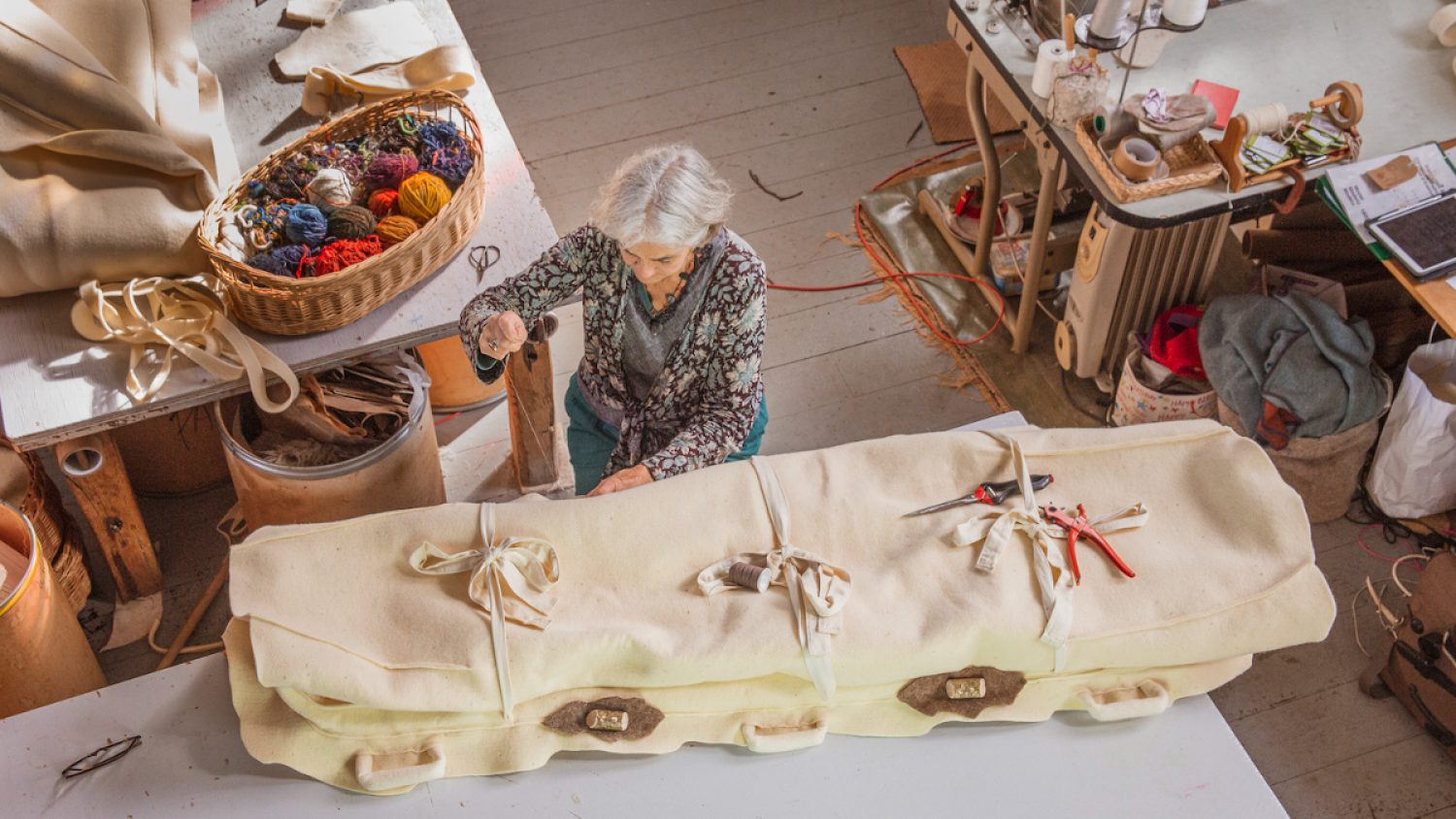Six minute read
‘Care’ and ‘simplicity’ are two words that come up frequently when talking to Yuli Somme, founder of Bellacouche, about the woollen shrouds that she creates from local materials.
Yuli is a textile artist who never intended to work in the funeral sector. Developing her craft has taken her on a remarkable journey from death-phobia to seeing death as part of the natural cycle.
At Poppy’s, we love Yuli’s beautiful creations (you can even see us having a go with her home felting kit!), and we share the ethos that underpins them, and we’re delighted that she is sharing her story with us here.
How did it all begin?
I’m a feltmaker, a craftswoman who makes all manner of weird and wonderful things — costumes, seamless garments, one-off wall hangings. I made my first woollen shroud for an exhibition entitled ‘Treading Lightly’ back in 1999.
For this exhibition, I made a tableau about the cycle of birth, marriage and death. Until then, I had been obsessed and horrified by death.
My father died when I was five. We were living in Norway at the time. When he died, we suddenly uprooted and came to the UK.
It was the 1960s and there was no grief counselling for children — it was all swept under the carpet. It was very traumatising — the grief itself and having to leave our beautiful fjord-filled Norwegian culture.
Making that first shroud was so cathartic for me. Making felt by hand is an energetic process — laying out the wool, wetting it, then days spent rolling it. A lot of makers, including myself, feel that the repetitive nature of making can be like meditation, it can take you deeper.
How did you turn a single piece of art into a business making shrouds that could actually be used?
It began when, a year after the exhibition, I got a call from someone asking if I could make a shroud for her dying husband out of the wool from his own sheep. I hesitated because I had no idea about the funeral industry. But I went and measured him up, and I did it. He was dying, but very conscious of what he wanted.
Soon, I joined with another feltmaker who was also interested in exploring this idea further. I experimented with different shapes and explored the practicalities — how do you convey a body in a woollen shroud safely to the grave?
I started with roadkill, like badgers and birds, making shrouds for them. This tuned me into the world of ceremony and respect, it was an important part of my journey.
Nature deals with death beautifully. If an animal is buried, it’s eaten by an explosion of other creatures underground. Looking at what happens in nature helped me to face my phobia.
My first shroud was hand-felted, but it would be impossible to make a shroud like that commercially because of the amount of time it takes. The felt itself needed manufacturing, so I partnered with the local carpet mill. I would source wool from local farms for them to make into felt.
You make cocoons, covers and cradles all out of locally sourced, natural materials. What are the differences between these products?
The cover is flat, it can be used to cover either a shroud or a coffin and can be personalised and reused. You don’t have to bury or burn it, so it can become a legacy item for family or friends to keep. People put a cover over a coffin and it tells mourners something of their story.
Cocoons are designed for burial and are suitable for natural burial. They come on a wooden frame — the wood is sourced from a nearby farm — with a functional mattress, a shroud and a felt cover strapped over the top. This is the mainstay of what I do.
The cradle is suitable for cremation and has been produced in collaboration with other local makers. It is inspired by Viking burial ships, taking me back to my Norwegian roots. It’s totally glue and metal free, using ingenious and ancient techniques.


